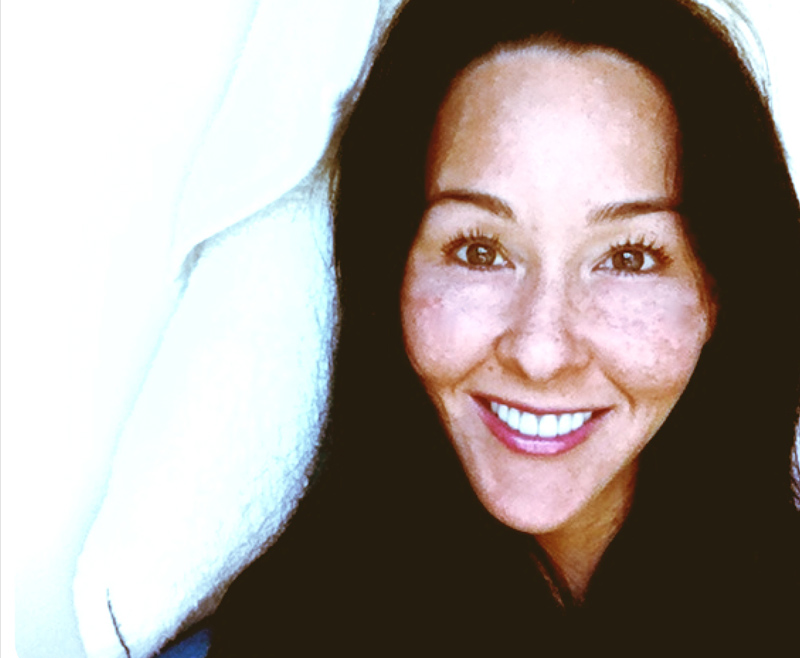Melasma is a brown colored hyper-pigmentation on skin which has been exposed to the sun: forehead, malar region, mustache, chin and mandibular branch. It occurs with a frequency of 50-70% in pregnant women (chloasma) and 4-5% in non-pregnant women receiving oral contraceptives.

Causes
- Excessive exposure to the sun.
- Intake of contraceptives that alter the correct functioning of melanocytes.
- Intake of light sensitive drugs.
- Pregnancy.
- Aging.
- Phototype: light skin is more prone to the appearance of stains.
- Tobacco. It has been shown that nicotine alters the activity of melanocytes, melanin-producing cells.
- Depilatory waxes: after hair removal, the chance of blemishes appearing on the freshly shaved area increases.
- An inadequate diet. The deficit of certain nutrients may contribute to the appearance of spots.
- Certain pathogenic agents, certain fungi and bacteria can cause the appearance of stains.
Types
Based on Wood lamps:
- Epidermal: Brown.
- Dermal: Bluish grey.
- Mixed: Brownish-gray.
Melanin
Is the natural substance that gives color (pigment) to the hair, to the skin and to the iris. The normal skin color of a person is determined genetically by the amount and distribution of melanin. Melanin is a filter which diffracts sunlight, i.e. reflects it out and prevents it from entering the body. Therefore, the melanin serves mainly to protect to the skin from solar rays.
Melanogenesis
In the process of melanogenesis, melanin is produced from the amino acid tyrosine and two types of melanin are generated; pheomelanin (from red to yellow) and eumelanin (from dark brown to black). This involves a great variety of skin tones.
Depigmentation
- They interfere with the biosynthesis of melanin and competitively inhibit tyrosinase.
- Copper-chelating (tyrosinase depends on copper).
- They evince powerful antioxidant activity.
- Avoid and lighten unwanted pigmentation.
- They unify skin tone.
Active ingredients
-Kojic acid: Inhibits tyrosinase. Blocks the conversion of tyrosine to dopa and this to dopaquinone. It inhibits the tautomerasa. Copper chelator.
-Thioctic acid: inhibitor of melanin synthesis through tyrosinase inhibition. Hydrophilic and lipophilic medium. Antioxidant.
-4-n-Butylresorcinol: Key direct action on enzymes in the synthesis of melanin: reduces the activity of tyrosinase, inhibits trp-1 (tyrosinase related protein 1).
-Azelaic acid: Decreases the transfer of melanosomes to keratinocytes.
-Acid azelaic: Stimulates the replacement of keratinocytes and controls the hyperactivity of the melanocyte.
-Alpha-arbutin: Blocks the synthesis of melanin by inhibiting tyrosinase. Its alpha glycosidic bond offers greater stability and efficiency. Plant derivative of hydroquinone without a cytotoxic effect.
-Ferulic acid: Powerful antioxidant. Protects the skin from UVB and UVA radiation. Enhances the action of other sunscreen products. Controls the activity of tyrosinase, with what prevents and lightens pigmentation. Anti-inflammatory. Synergistic action with vitamin C: joint control of the activity of tyrosinase.
-Vitamin C: Homogenizes skin tone and adds luminosity immediately.
-Vitamin A: It modulates hyperactivity of the melanocytes.
-Mulberry extract (natural skin lightener): Inhibits tyrosinase and melanin formation.
 Österreich
Österreich  Bolivia
Bolivia  Brasil
Brasil  България
България  China
China  China - Hong Kong
China - Hong Kong  Colombia
Colombia  Costa Rica
Costa Rica  Česká republika
Česká republika  Dominicana
Dominicana  USA
USA  El Salvador
El Salvador  France
France  Deutschland
Deutschland  Guatemala
Guatemala  India
India  Éire
Éire  Italia
Italia  Lëtzebuerg
Lëtzebuerg  Malta
Malta  المغرب
المغرب  Mexico
Mexico  Nederland
Nederland  Panama
Panama  Peru
Peru  Polska
Polska  Portugal
Portugal  România
România  Россия
Россия  España
España  China - 台湾
China - 台湾  الجمهورية التونسية
الجمهورية التونسية  Türkiye
Türkiye  United kingdom
United kingdom  International
International 







